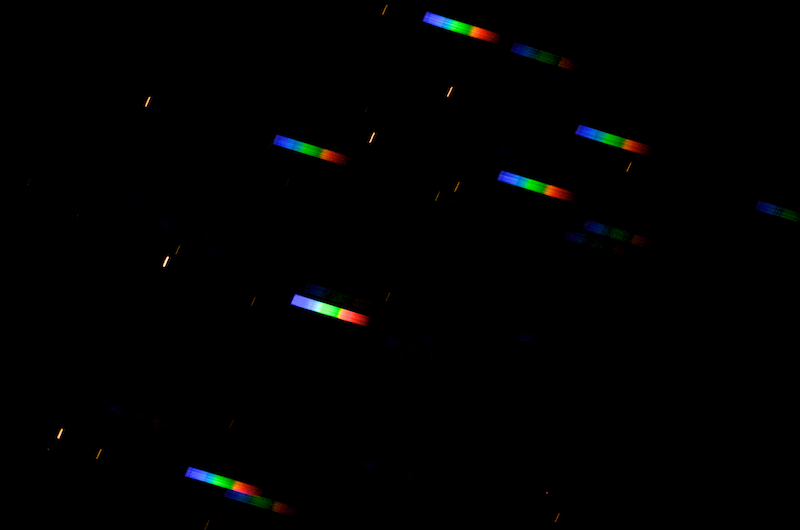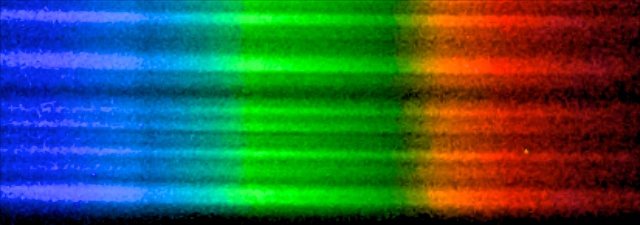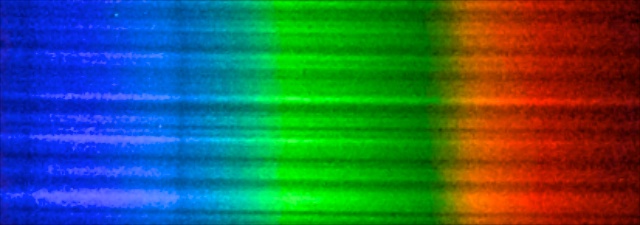
Pleiades Spectra
Posted: 17 September 2012
The observatory was opened Sunday, 16 September 2012, at 2046 MST, 75°F. The sky was clear. I started the night by checking Observer Pro on my iPhone for some possible new objects to observe. I selected several DSOs. At 2130 MST, I began observing the selected objects at 77X. NGC7023 was a faint nebula. NGC7027, planetary nebula, was small and green. NGC7026, planetary nebula, was small and very faint. NGC7008, planetary nebula, was large but faint. NGC6946, galaxy, was large but very faint. Caldwell 19, nebula, was large but very faint, and was best viewed with averted vision. I added many of these to my astrophotography list to be done on a future session.
At 2153 MST, I added the focal reducer to the 8" LX200-ACF and viewed M31, Great Galaxy in Andromeda, with the 26mm eyepiece. The companion galaxies M32 and M110 were in the same field-of-view (FOV) with M32. Great view. I then viewed M33, galaxy. Another great view. Next was the Double Cluster; both star clusters were visible in the same FOV. I then decided to try for a challenging object, the Helix Nebula, while using the focal reducer. The nebula was visible, large, but faint. I added a Light Pollution Filter (LPR); that helped somewhat by increasing the contrast of the nebula against the background sky. I switched to a O-III filter; that provided the best view, with some structure now being visible. I then viewed M16 (Eagle Nebula), low in the southwest. The nebula was barely visible. Contrast was increased with the LPR filter. The best view was with the O-III filter; using averted vision I could see a lot of structure in the nebula.
At 2222 MST, I slewed the telescope to M45, the Pleiades, my main spectra imaging target for this night. It was currently low in the eastern sky. At 2245 MST, I began preparing the D7000 DSLR for prime focus + focal reducer + Star Analyzer spectra imaging. I mounted the camera on the 8" telescope, focused (difficult), and managed to get all the primary Pleiades stars in the FOV. At 2300 MST, I began imaging. This is a 5 second, ISO 400, drift method (RA drive off), exposure:
Arcturus - Spectral Type K1

I then removed the focal reducer and began imaging the individual stars in the Pleiades. The top image is the raw unprocessed spectra and the bottom image is the processed spectrum. The images were all 5 second exposures at ISO 500 or 800, depending on the star magnitude.
Merope - Spectral Type B6

![]()
Electra - Spectral Type B6

![]()
Celaeno - Spectral Type B7

![]()
Maia - Spectral Type B7

![]()
Taygeta - Spectral Type B6

![]()
Alcyone - Spectral Type B7

![]()
Atlas - Spectral Type B8

![]()
At 2332 MST, slewed to the star Aldebaran and began waiting for it to rise higher in the sky. Began imaging at 0000 MST. Unfortunately, it was still too low and poor seeing made the Fraunhofer lines "wiggle" during the 5 second, ISO 200, exposure, as seen in the top image:
Atlas - Spectral Type B8

![]()
I procssed the image anyway (bottom) but the lines were somewhat washed out. I will re-do on a future session with Aldebaran higher in the sky.
I ended imaging at 0003 MST and viewed Jupiter and the four Galilean Moons, low in the east, 77X.
The observatory was closed at 0015 MST, 69°F.
Comments are welcome; use the Comments section below, or you can Email Me. Thanks.
Go to the previous report.
Return to the Cassiopeia Observatory Welcome Page.